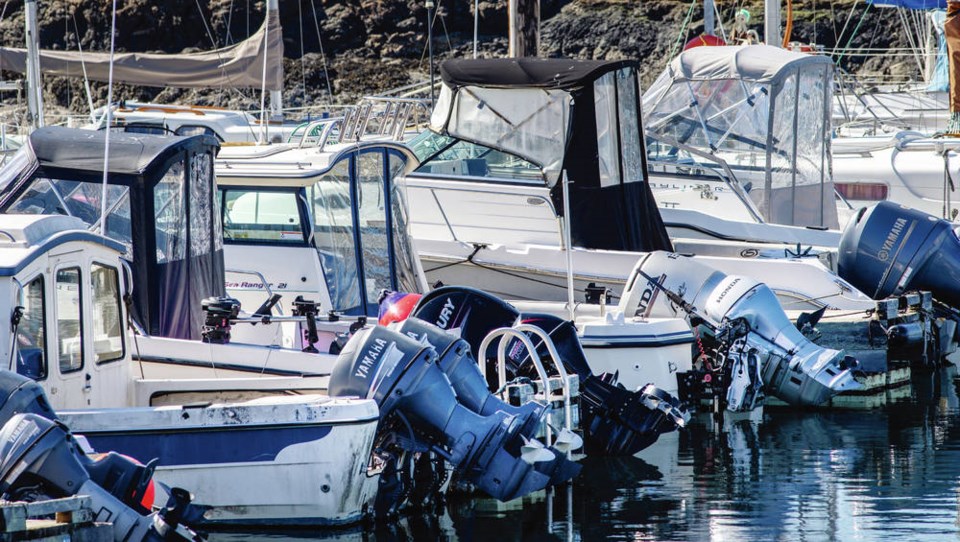Recreational fishers say they are easy targets in a federal plan for fishing closures and tight regulations on chinook salmon this year to protect the southern resident killer whales’ principal food source.
“We’re the low-hanging fruit,” says Peter Hovey, who operates Trailhead Resort and fishing charters in Port Renfrew.
“We take so little of the [overall] catch, but they have to take a swing at somebody.”
For the third year in a row, the Department of Fisheries and Oceans has ordered fishery closures and strict regulations for whale watchers and other vessels to protect the critically endangered southern resident population of orcas, whose numbers remain low at 75 in three pods.
The measures focus on the main threats to the orcas, aiming to protect access to chinook salmon stocks and limit acoustic and physical disturbances and contaminants.
The commercial and recreational salmon fishery will be closed in portions of Swiftsure Bank from July 16 to Oct. 31, and in areas of the Strait of Juan de Fuca from Aug. 1 to Oct. 31. Retention of Chinook isn’t allowed between April and July for much of the south coast.
New this year is a closure protocol for commercial and recreational salmon fisheries in the southern Gulf Islands. Closures there will be triggered by the first confirmed presence of southern resident killer whales in the area.
Monitoring for the whales will begin in the area June 1 using aircraft, boats, the University of Victoria’s Ocean Networks Canada system of sensors and DFO’s new marine mammal desk in Sidney, said Terry Beech, parliamentary secretary to the minister of fisheries and oceans and a Burnaby MP.
If a southern resident killer whale sighting is confirmed, the fishery will be shut down and remain closed until Oct. 31.
Distancing measures will also be enforced. Vessels will be prohibited from approaching any killer whale within 400 metres in coastal waters between Campbell River and Ucluelet, including Barkley and Howe Sound.
Three interim sanctuary zones off Pender and Saturna islands and at Swiftsure Bank will also resume from June 1 to Nov. 30. No vessel traffic will be permitted in these areas, with exceptions for emergency and Indigenous vessels.
For recreational fishers, the closures — and the rule against retention of chinook from April to July over the past two years — have been difficult. Chinook are the premium sports fish, valued for their meat and vigorous fight. Charter companies say without the prospect of chinook during prime months, customers often balk at booking, though other salmon and sport fish are plentiful.
Bob Meyer, who has operated Silver Blue fishing charters on Gabriola Island for 35 years, said B.C.’s sports fishery injects about $1 billion a year into the economy.
Last year was the first year he lost money, the result of a combination of non-retention rules and closures on chinook and the fallout from COVID.
“April, May and June is the very best fishing, but with non-retention, business was down 25% two years ago and last year it was disastrous with that and COVID,” Meyer said.
“Honestly, the orcas are my favourite creatures … and if I thought this would save them, I’d tie up my boat and quit.”
Both Meyer and Hovey believe there is much more at play than fishing in the southern resident orcas’ tenuous hold on survival, including toxins and pollutants that are retained in the whales’ bodies and severely affect their health and ability to eat.
Sewage, dumping from vessels, pollution and degradation of spawning rivers and tributaries, as well as increasing freighter traffic, are all threats to the orcas, they say.
“If [the orcas] spend their entire time in front of Victoria or in one area, they will never make it,” Hovey said. “They have to move and I think that’s why you’re seeing them in other places now.”
Beech said reducing contaminants is a major focus for the federal government, which is enhancing regulatory controls on vessels and investing in infrastructure as well as education. “All of these things have a cumulative effect on our oceans, from the feeder species in our rivers and inlets to the whales,” he said.
He said imposing fishing closures and other rules “are not easy decisions. “I do hear their concerns,” said Beech. “And we want to make more opportunities for people to fish in other areas.”
Meyer said the federal government should focus on cleaning up rivers, noting the Cowichan River went from producing 1,500 chinook to 20,000 to 30,000 after revitalization projects.
The closures could have the unintended consequence of putting pressure on other fish stocks, said Meyer. “If people can’t keep any salmon for three and a half months, they are going after ground fish, like ling and rock cod.”
DFO said Wednesday that it’s planning to release a million Chilliwack River Chinook Hatchery salmon for the second year in a row to boost the Fraser River stock and increase prey for southern resident orcas.
The federal Transportation Department said it also has an agreement with the whale-watching and ecotourism industry to not offer or promote tours focused on southern resident killer whales.
The Vancouver Fraser Port Authority will announce measures related to large commercial vessels in coming weeks.
Dan Kukat, a director of the Pacific Whale Watch Association who also runs SpringTide Whale Watching and Eco Tours in Victoria, said the government is missing the opportunity to provide more chinook salmon for southern resident orcas.
He participates in the Sooke Chinook Sea Pen Enhancement Initiative, where close to 500,000 chinook smolts, brood stock from the Nitinat River system, are being released. Such programs help save wild chinook and support orcas as well, he said.
“For a significantly lower cost, we could replicate projects all throughout the Salish sea,” said Kukat.
— With files from Carla Wilson



